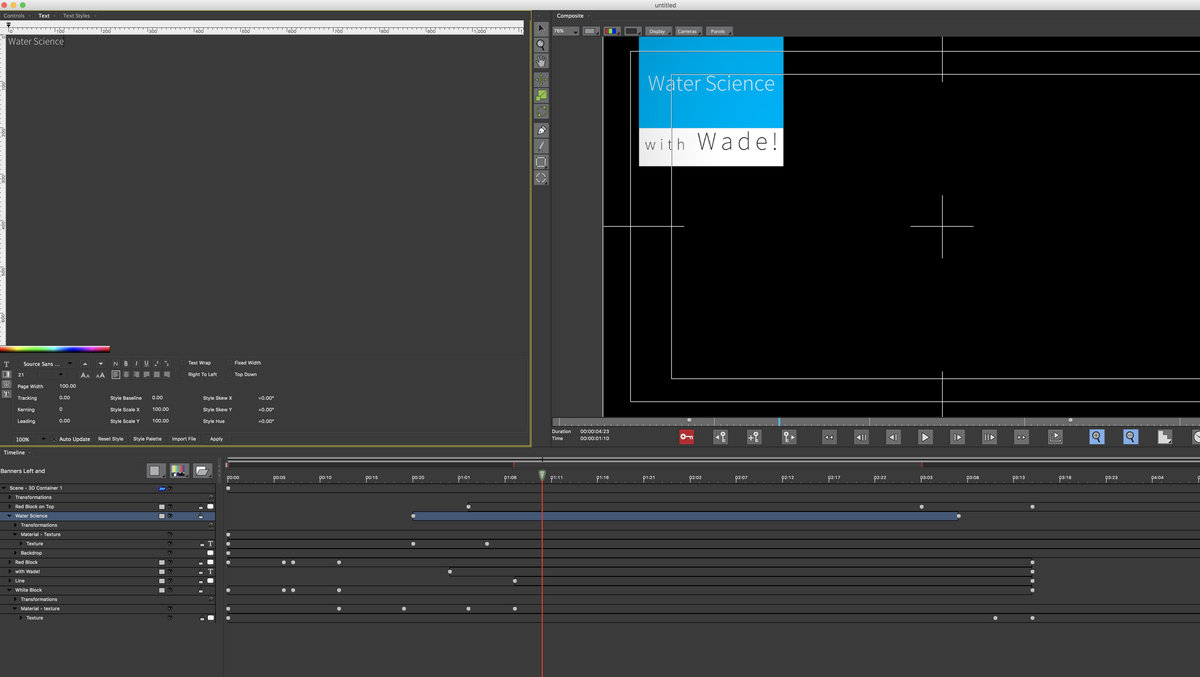Adobe Premiere Pro Denoiser
Not available for FCP X, Motion 5 nor Sony Vegas Pro. Adobe After Effects CS5 and up, and Adobe CC versions; Adobe Premiere Pro CS5 and up, and Adobe CC versions. What's new in version 3.0.2? Posted March 30, 2015: Fixes a bug where GPU acceleration did not properly work in Premiere Pro; 3.0 Adds GPU support. Adobe Premiere Pro CC; Adobe Media Encoder; Adobe Audition CC; If you want to know what the changes are and how they work, this is a great place to start! In this short video excerpt, Larry Jordan illustrates how to use the new DeReverb and DeNoise effects in Adobe Audition and Premiere. Follow these steps to quickly and easily clean up your noisy video in Premiere Pro! Noisy footage is an inevitability. There are several reasons why your footage ends up noisy. The two most common are high ISO and recording in a compressed format. To combat this, let’s learn how to quickly and easily clean up noisy video in Premiere Pro. Use Premier Pro to remove up static noise from your audio. Ok, here is the good stuff. Even if you do the first two steps correctly, there is a good chance you’ll have static feedback underlying the audio tracks in your video or podcast. Here’s how to use Adobe Premiere Pro to remove that sound from your audio track.

The denoiser effect provides an easy way to remove background tape noise commonly found in older analog tape formats. This noise takes the form of a slight hiss.
The denoiser effect can be found in the effects window, under Audio Effects > Stereo > DeNoiser or the equivalent effect in the 5.1 and Mono folders. To apply this effect, select the appropriate clip in the timeline and drag the effect onto the clip (or drag the effect into the Effect Controls window).
Once the effect has been applied, expand it in the Effect Controls window. There are two ways to adjust the settings: Custom Setup and Individual Parameters. The screenshot on the right shows the custom setup option.
White line: Audio spectrum.
Yellow line: Noise floor.
Green line: Offset setting.
Click and drag your mouse in this window to see precise units.
Noise floor
The level of the noise floor in decibels. As the clip plays, Premiere constantly re-estimates this value.
Freeze
At any time when the clip is playing, click this box to stop the noise floor estimation at the current value. This is useful if the unwanted noise varies greatly or is intermittent.
Reduction
The amount of noise reduction in decibels, from -20dB to 0 dB.
Offset
A value in decibels to add or subtract from the automatically estimated noise floor value. This allows you to be more precise if the automatic estimation is not accurate enough. The allowed range is -10dB to +10 dB.
1. Create a controlled recording environment
This can obviously happen in the form of a dedicated studio, but certainly doesn’t have to be. Many of the most popular podcasts on the internet are recorded in closets, bedrooms, or shared office space.
Regardless of your space, find little hacks like minimizing noise, getting rid of ambient sounds (like air conditioning), or even building a mini recording box.
2. Ensure you’re using the right mic for your situation
We use a cardioid microphone, which is the preferred mic to use when you’ll be recording in an environment that could have uncontrolled noises nearby. Cardoid mics pick up the sounds that are spoken directly into them. This tool is ideal for setups that have the microphone anchored in one spot allowing the speaker to speak directly into it.
3. Use Premier Pro to remove up static noise from your audio.
Ok, here is the good stuff.
Even if you do the first two steps correctly, there is a good chance you’ll have static feedback underlying the audio tracks in your video or podcast. Here’s how to use Adobe Premiere Pro to remove that sound from your audio track:
- Open your file and select the specific audio clip that has the static (note: if you have multiple clips, you’ll need to do each of them separately).
- With your clip selected, go toEffects > Obsolete Audio Effects > DeNoiser (Obsolete). A prompt will appear asking if you want to use a newer effect rather than DeNoiser. Deny this option.
- Drag the selected DeNoiser effect onto the clip you need the static removed from. Once you have, go to the Effect Controls > DeNoiser > Reduce Noise By and slide the effect until you notice the static move away. Depending on the clip, I typically find a sweet spot between 6-9 decibels.
We use the DeNoiser rather than the updated Adaptive Noise Reduction effect because the latter has a strange buffer that leaves the static in for the first second or two of your clip. The DeNoiser clip may be outdated, but it works thoroughly. Once complete, you should notice a distinctly clear audio clip without any annoying static muddling the sound quality.
Hopefully, this is a helpful tutorial. /nexus-font-download-for-mac.html. Feel free to reach out with any questions or concerns and happy editing!
Adobe Premiere Pro Video Denoiser
LET'S GET STARTED
Adobe Premiere Pro Denoiser
Hwp 2014 vp for mac dmg. Our team is always ready to brainstorm and offer support as you grow your B2B brand.